

Many countries of the world are facing a major problem of water pollution. The mining industry, chemical manufacturers, the use of toxic and non-respect for the environment are responsible for this situation. Each has its share of responsibility. The purification of the contaminated water is a major issue in our society. Many researchers are struggling daily to find more environmentally friendly and economical solutions. Indeed, in developing countries, water purification methods are extremely expensive. Developing countries need to find new methods to suit their needs.
Purify contaminated water: challenge and alternatives
The most polluted places in the world.

- 1/ Agbogbloshie, Ghana * (Electronic waste pc, computers, telephones make Ghana the trash of the world)
- 2/ Chernobyl, Ukraine (April 1986 the Chernobyl nuclear disaster is responsible for this alarming situation)
- 3/ Citarum River, Indonesia (Use of Citarum that of aluminum, iron and manganese pollute water)
- 4/ Dzershinsk, Russia (The Soviet chemical industry and its many toxic wastes seeping into the water)
- 5/ Hazaribagh, Bangladesh (Toxics pollute the river water)
- 6/ Kabwe, Zambia* (Lead and zinc mine polluted the water.)
- 7/ Kalimantan, Indonesia (The damage of the gold industry has contaminated water)
- 8/ Matanza Riachuelo, Argentina (the chemical manufacturer reject waste into rivers.)
- 9/ Delta du Niger, Nigeria * (The oil industry is the cause of the water contamination.)
- 10/ Norilsk, Russia (Mining with copper, nickel, sulfur dioxide pollute water.)
Note that three African countries Ghana, Zambia and Nigeria are at the top of this ranking. It’s really sad situation. It’s time to take control of its destiny, leveraging research, to save our planet.
Purification of contaminated water: challenge and alternatives.
The purification of the contaminated water is a real challenge for the world. Oil, mining and chemical companies must make a considerable effort to fund research to find alternative solutions to protect the planet. It is clear that these areas are very profitable. But what’s the point of being rich if all around us everything is dirty, polluted, and people are dying because of us. You will find above different solutions proposed by researchers to improve the lives of citizens and save our environment.
- Solution 1: purify water using Moringa Oleifera

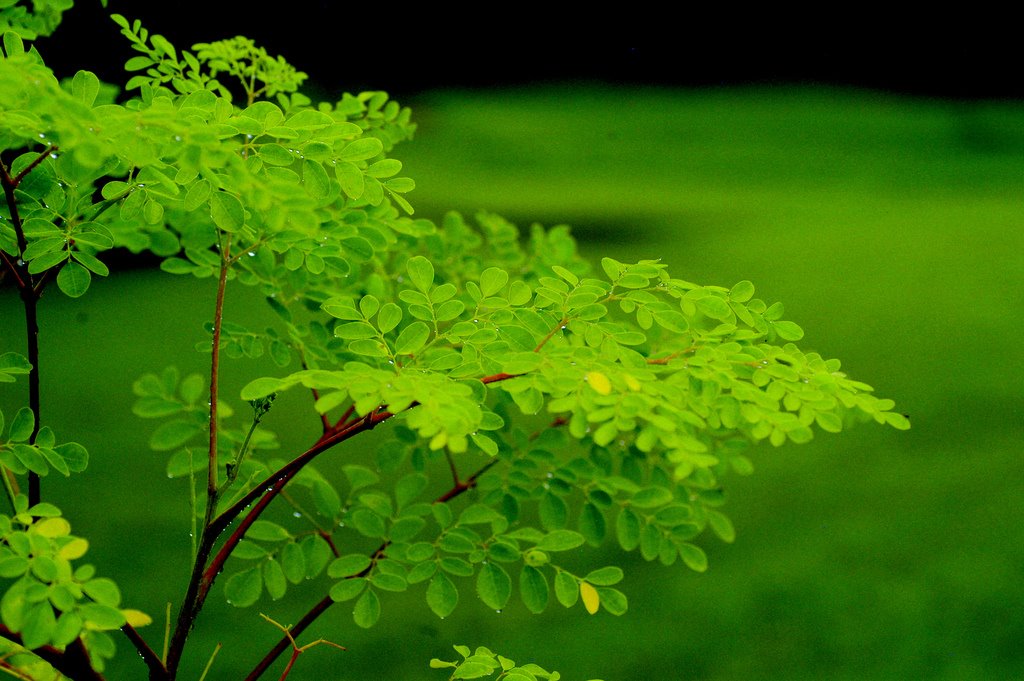
In my article on the Moringa Oleifera, plante traditionnelle miracle, I spoke of the benefits of Moringa to humans, animals and the planet. Indeed, Moringa is a tropical tree of the family Moringaceas, located in subtropical regions of Southeast Asia, Africa, Central America and South America and the Middle East . There are more 13 species of Moringa in the world.
Regarding the pollution, Moringa is used to purify water. The crushed seeds of the Moringa Oleifera tree can be used to purify water in rural areas. They can eliminate 90-99% of impurities and microbes from the contaminated water.
Example below shows the dirty water purified by the Moringa:

1. Dirty water / water purifies 2. / 3. After 1 hour, water is clean
The advantage of Moringa is that it is inexpensive. This is a very simple method that can purify river water. It allows to substitute chemicals (aluminum sulfate), which are dangerous for humans and the environment. Moreover, the Moringa reduces water pollution and harmful bacteria.
What is the method to purify water with Moringa seeds?
Feel free to plant and use this plant. She has a lot of benefit to humans, animals, water and the fight against malnutrition.
- Solution 2: purifying water using coriander.
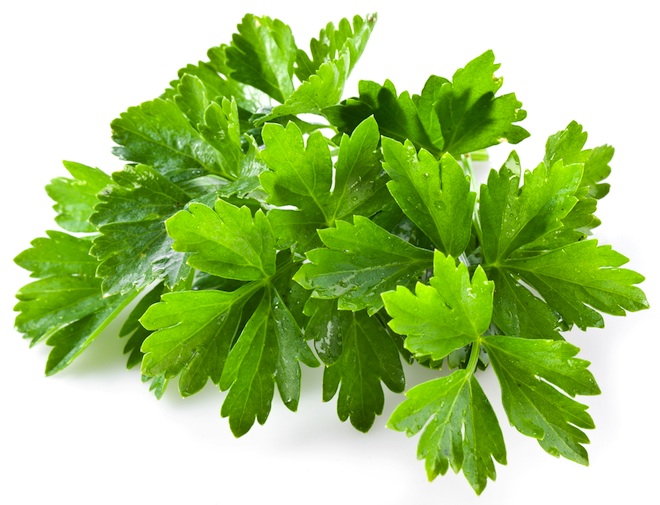
In Mexican, Asian, cilantro is an herb commonly used. This plant is very tasty, but it also helps purify the water. In traditional methods of water purification, using activated carbon. But for many developing countries, this technique is extremely expensive. Following various problems on the environment, we are looking for economic, ecological and very inexpensive solutions.
The research team of scientist Douglas Schauer of Ivy Tech Community College in Indiana and those of the Polytechnic University of Francisco I, Mexico, have put their joint expertise to find inexpensive ways that serve to filter the water, in the region of Tule Valley, near Mexico city. Through their studies, they found that cilantro is an herb that helps to absorb heavy metals from contaminated water.
Heavy metals such as nickel and lead are polluting the waters of the Valley of Mexico. These metals infiltrate water. Farmers use the same water to irrigate crops. All these wastes are found, then, in our food and are the source of serious neurological problems in humans. Usually treated water with activated carbon, but this conventional method is expensive for the people of this region.
The research team is continuing their studies. They test various plant samples such as parsley, cactus blossom, etc. The researchers quickly realize that cilantro is a highly effective absorbent organic material. Schauer says. “Coriander grows wild in large quantities in countries that have problems with water pollution, etc.”
The benefits of Coriander:
- inexpensive
- biosorbent
- readily available for many developing countries
- easy to grow at home and in nature
- incredible architecture wall
- more efficient than conventional methods of water purification.
Indeed, cilantro grows wild in the Third World. This is a very easy plant to grow at home or in nature. His real success is that the architecture of the outer cell walls is ideal to absorb heavy metals such as lead or nickel. These 100% natural materials (microbes or plants) include both absorption and adsorption of heavy metals. The experimental results showed that coriander was far more effective than conventional methods. Other plants such as dandelion, parsley, culantro have similar characteristics. They have qualities of biosorbent.
What is the method to purify water with cilantro?
1. Purification method
According to the filtering method of the coriander, ground coriander upwardly, then it is passed with water through a tube. All this allows the clean water to flow to the opposite end of the tube.
2. Dry coriander
The second method is to dry the coriander and put it in tea bags. These tea bags are then placed in a jar of water in order to absorb some toxic metals.
It’s something they already have, there must be a minimum of treatment, and it’s just a matter of taking plants and drying on a rock in the sun for a few days,” said Schauer .
Following the success of coriander on heavy metals such as nickel and lead, researchers are actively studying how the coriander can remove heavy metals such as mercury and arsenic. “We need to look at mixtures of metals to see if cilantro evenly pulls all metals.” Says Schauer.
How coriander it take to clean water?
Schauer said “a handful of coriander will be enough to clean a jug of water highly contaminated with lead.” The researchers presented their findings at the national meeting of the American Chemical Society. See this article TIME.com !
- Solution 3: banana skins purify contaminated water

Long ago, the banana peel is used in everyday life for its benefits. Indeed, the banana peel is good for the skin, is used to clean leather and polish shoes and silver, used as a traditional remedy against warts and wine can be done with.
In the journal of the American Chemical Society, the researchers say, that the banana peel is very effective to purify contaminated water. They state that chop the banana skin is more effective than other conventional purification materials.
Gustavo Gastro and colleagues talk about the devastating effects of mining on the environment.The heavy metals such as lead, nickel, copper, have adverse effects on human health and on the planet. As Douglas Schauer and colleagues of Mexico, Gustavo Gastro claims that conventional methods are too expensive and certain substances used are toxic.
Based on previous work, the researchers observed that the peanut shells and coconut fiber are able to eliminate waste and toxins in the water. Through this, they wondered if the skin of the banana could have this cleansing effect. They were surprised to discover that chop the banana peel can remove lead and copper.
A purification apparatus in banana peels can be used up to 11 times without losing its metal binding properties. They note.
The benefits of banana peel
- inexpensive
- you could find in supermarkets or specialty stores.
- 100 % bio (If you do not put chemicals inside)
- It is more effective than filtering devices that already exist. Banana peels are extremely fibrous. In the chopping, the pores absorb the metals.
Researchers from the Institute of Science, Botucatu in Brazil, supporting the words of Gustavo Gastro. They point out that the banana skins can outperform conventional purifiers such as silica, aluminum oxide and cellulose. The team from the Institute of Science were based on research showing that sugar cane, apple, nuts waste fibers, peanut shells can clean the waste and toxins in the water. All these natural materials contain chemicals which have an affinity for metals.
This fantastic discovery could lead to purify water cheaply, without toxic.
- Solution 4: purify arsenic full of water with a mixture of algae and bacteria
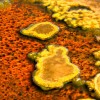
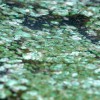 A long time, scientists were using chemicals to convert arsenic. Therefore, Australian scientists have invented a water filter that can filter arsenic from drinking water. The filter uses a mixture of algae and bacteria. The algae and bacteria convert arsenic in a less toxic form, less soluble and easier to extract. This method could be very useful in developing countries, or the water is contaminated with arsenic.
A long time, scientists were using chemicals to convert arsenic. Therefore, Australian scientists have invented a water filter that can filter arsenic from drinking water. The filter uses a mixture of algae and bacteria. The algae and bacteria convert arsenic in a less toxic form, less soluble and easier to extract. This method could be very useful in developing countries, or the water is contaminated with arsenic.
How does it work ?
The bacteria need a constant source of carbon to stay alive. Algae well come into play because they allow bacteria to stay alive. When exposed to sunlight, they develop and create a regular stream of carbon and oxygen feeds the bacteria. In turn, the bacteria decompose organic matter and carbon dioxide feeds the algae.
Researchers are studying to see if the filter could be a practical solution for the inhabitants.
The fight continues because the arsenic poisoning is a global problem that affects all countries. Arsenic is very dangerous, it can cause cancer, intestinal problems, heart disease and death.
- Solution 5: purify water contaminated with arsenic by Pteris vittata fern

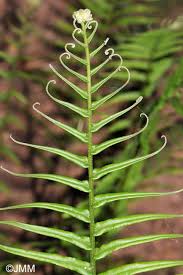 Arsenic is a real problem in our society. For example, in Bangladesh, India, more than 3000 people die from arsenic pollution of drinking water. Many scientists of the world are struggling to find ways to purify water. US scientists Mark Elless the corporation Edenspace systems in Dulles, Virginia, and their colleagues found that Pteris vittata fern absorb arsenic from contaminated water.
Arsenic is a real problem in our society. For example, in Bangladesh, India, more than 3000 people die from arsenic pollution of drinking water. Many scientists of the world are struggling to find ways to purify water. US scientists Mark Elless the corporation Edenspace systems in Dulles, Virginia, and their colleagues found that Pteris vittata fern absorb arsenic from contaminated water.
Pteris vittata is the family of Pteridaceae and was identified as arsenic accumulator. It is robust, has a rapid growth.
The advantages of the fern Pteris vittata
- inexpensive
- biofilm plant
- absorbs arsenic and heavy metals in contaminated soils
In their latest study, published in Environmental Science and Technology, Mark Elless and colleagues have studied in detail the effects of their ferns. The result is that plants reduced the arsenic concentration of 200 micrograms per liter of water in 24 hours. The researchers found that the same plants can be used repeatedly.
The phytofiltration is a cheap method that would eliminate arsenic in water. The plants are very useful for reducing the concentration of arsenic. Squeezing the sap of plants, it takes about three quarters of arsenic, which can then be extracted for industrial purposes. Ferns can be grown directly in water. They are similar to the systems of reeds, used to remove organic waste.
Phytoremediation is a set of biological techniques that rely on the ability of some plants to tolerate the presence of pollutants in soils available.

This is an interesting technology, ” said Andrew Meharg, a specialist in arsenic uptake by plants at the University of Aberdeen, Scotland. But he thinks it will be better for the cleaning of small-scale water in developed countries, rather than the purification of contaminated water in the developing world.
But Meharg is less optimistic. He emphasized that the ferns may not be able to cope with the enormous volume of water used for irrigation, and a country like Bangladesh probably lacks the infrastructure to maintain these treatment facilities.
In parallel we can talk about the Chinese scientist Chen Tongbin, soil scientist with the CAS (Chinese Academy of Sciences). In 1999, Chen Tongbin had devised a solution to remedy the polluted soil. His discoveries are used, for example, in Hunan, near the mining sites that have caused heavy pollution in cultivated soils. In 5 years, the land in question were purified through the fern. Pteris vittata fern The L managed to clean up soils with heavy metals such as arsenic, nitrates, mercury, pesticides, only a few seasons. Tongbin Chen and colleagues have perfected the treatment by inserting rows of ferns and cash crop rows. Specifically, they grow a row of ferns between each row of vegetables. Soon, the ground has been cleared.
We observe that China, the United States, India suffer a lot because of the arsenic pollution. We must continue and develop solutions more effective in protecting people and the environment.
- Solution 6: purify water with bio sand filter
Clean drinking water is a real headache for some developing countries. Indeed, some areas do not have access to water. Establish processes inexpensive, convenient, can save the lives of thousands. Often the contaminated water is responsible for many diseases and leads in the worst case death.
The bio sand filter is an amazing and innovative process that can purify water, using dirt. This is a very effective way to provide drinking water for the population. This filter helps eliminate diseases that roam contaminated water.
How to build a bio sand filter?
The filters are constructed in an iron mold. They start with a concrete base, which form the filter bottom. “The center of the filter is then filled with different sized layers, crushed stone – namely two layers of gravel and sand, creating three levels Water is then poured this mixture through several layers, and.. during three weeks, an organic layer is formed on top of the filter that removes 99% of bacteria from water passing therethrough. drinking water and then filtered slowly through the naturally formed bacteria and sand layers at a speed about one liter per minute, and drinking out. what’s even more amazing is that this natural filter can last 12 months if properly maintained. “said Peter Njodezka of life and the development group water in Cameroon (LWDGC).
The benefits of bio sand filter:
- inexpensive
- easy to build
- innovative process
- effective way to provide drinking water in disadvantaged areas.

III How to purify water?
If you are in the desert, disaster, if you live in a place where access to clean water is defective, you should know how to purify water. In these circumstances, you can not afford to drink contaminated water, not clean, non-drinking, as this can give you diseases. And unfortunately in the worst case, you bring death. Here is a method 1 4-step found on the site wiki how.
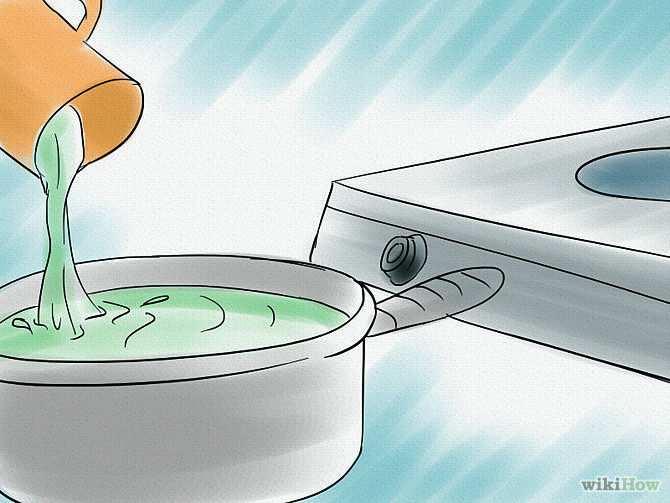 |
 |
| 1. Place water in a saucepan. Place the pot on the stove and turn the high heat. When the water boils, all the bacteria that live in it will be killed, thus ensuring that you do not get sick when you drink water. If you are in the desert when you need to purify your water, build a fire to boil your pot. If you do not have pot you can use any container that is fireproof. |
2. Watch the bubbles.
The bubbles means that the water is boiling. |
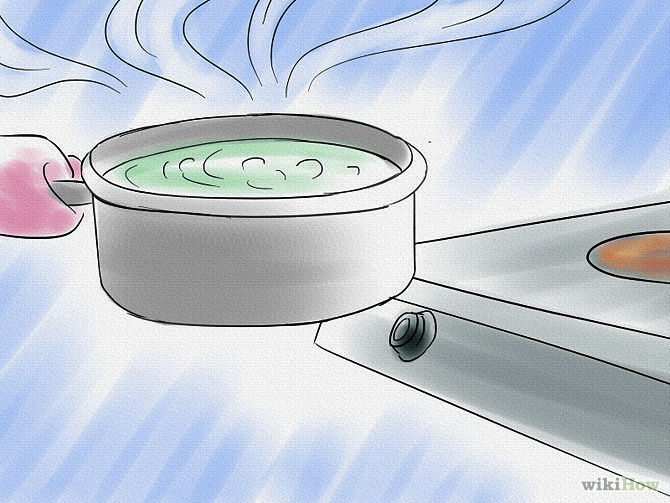 |
 |
|
3. Remove from heat.
Use caution when handling the pot and water because they are very hot. |
4 Let the water and adjust. If you drop water, all the elements in the water will flow down naturally, which allows you to drink pure water. |
Step 2 to 4, you can use purification tablets (people suffering from thyroid, women over 50 and pregnant women should consult their doctor before taking her pills. You can also use a purifier .
In conclusion, the purification of water affects all countries of the world. This is a major issue for people and the environment. Businesses that working in polluted areas should absolutely invest in research to take care of the environment. They will be able to work without harming others beings property. And everyone will be happy.
Feel free to also read your article Rush for rare earths: issues, alternatives, Africa
All persons who are testing different solutions. Feel free to send us your experiences on coriander, banana peel, seaweed, moringa, etc.















